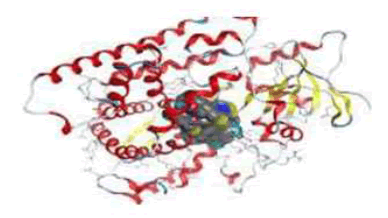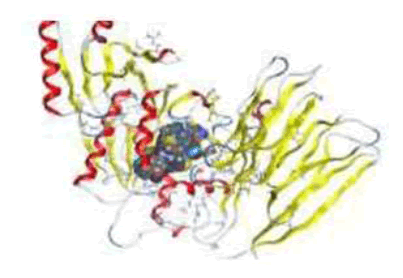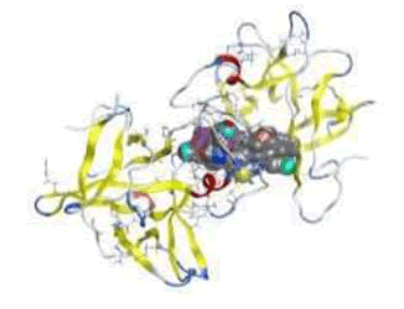Abstract
New Approaches of 4-Aryl-2-Hydrazinothiazole Derivatives Synthesis, Molecular Docking, and Biological Evaluations
Author(s): Magda H Abdellattif, Mostafa A Hussien, Eman AlzahraniIn the field of the preparation of chemotherapeutic agents with new mechanism distinct from currently approved drugs is important. The implication of different members of Histone Acetyl Transferase (HAT) in cancer disease is well documented in literature, however the clinically effective approved small inhibitor molecule is still lacking. Previous reports indicated that 4-aryl-2-hydrazinothiazole derivatives provided a useful start point to develop HAT inhibitors. Consequently, preparation and biological evaluation of a focused library of 4-aryl-2- hydrazinothiazole based derivatives as useful as anti-cancer agents. Synthesis of 4-aryl-2-hydrazinothiazoles (1a-d), (2a-d), (3a-c), (4a-b), (5ab), (6a-b) studied by either conventional method and free solvent microwave one pot method, the activity against different cancer cell-lines and the antimicrobial activities against different organisms also studied. It was found that all of the prepared thaizoles derivatives were active toward many cell lines (breast, liver, and prostate) where the more active compounds were 4a, 4b, and 6a. Most of these compounds showed highly activity as antibacterial for gram positive and gram negative. However it showed also antifungal activity. Molecular docking studies guided and proved the biological activities of these novel 4-aryl-2-hydrazinothiazoles. Also Infrared Radiation (IR), Proton Nuclear Magnetic Resonance (1H-NMR), Carbon-13 Nuclear Magnetic Resonance (13C-NMR), Gas chromatography–Mass Spectrometry (GC-MS), and elemental analysis were studied.
Graphical Abstract

3D plot of the interaction against receptors of 3EQM

3D plot of the interaction against receptors of 3CQX protein with 4b

3D plot of the interaction against receptors of 4ihz protein with 4a
Select your language of interest to view the total content in your interested language
Google Scholar citation report
Citations : 15261
Der Pharma Chemica received 15261 citations as per Google Scholar report
Der Pharma Chemica peer review process verified at publons



